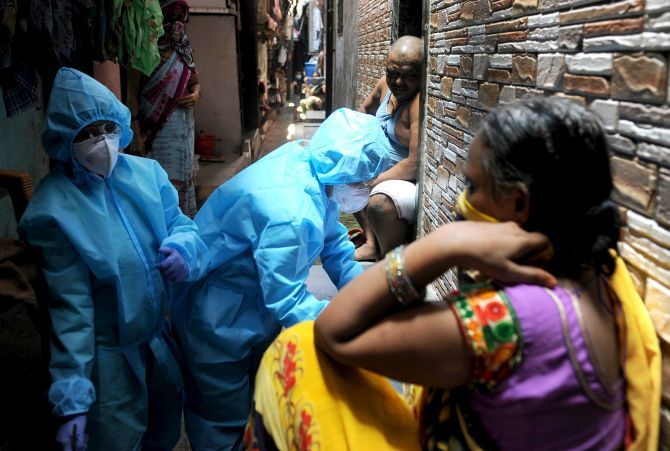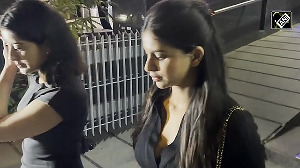The ministry of health and family welfare on Sunday informed that the rate of growth of coronavirus cases in Mumbai's Dharavi has reduced to 1.02 per cent in June from 12 per cent in April.

It said that proactive measures by the Brihanmumbai Municipal Corporation ensured an improved case doubling time to 43 days in May and 78 days in June.
"Being densely populated (2,27,136 persons/sq km), Dharavi had 491 cases in April with 12 per cent growth rate and case doubling period of 18 days. Proactive measures adopted by BMC reduced COVID-19 growth rate to 4.3 per cent in May 2020 & further to 1.02 per cent in June. These measures also ensured an improved case doubling time to 43 days in May 2020 and 78 days in June 2020," the release by MoHFW read.
The ministry said the efforts of the Maharashtra government and BMC have shown encouraging results. As part of these efforts, they have actively 'chased the virus' and aggressively conducted targeted tracing of COVID suspects, MoHFW said.
Over 2,000 coronavirus cases reported in Dharavi, Asia's largest slum situated in Mumbai.
"Several challenges presented themselves to BMC in Dharavi where 80 per cent population depends on community toilets. About 8-10 people live in households/hutment which measures about 10ft x 10ft coupled with the existence of narrow lanes with 2-3 storied houses where often the ground floor is a house and other floors are used as factories. Hence, there were severe limitations of physical distancing with no possibility of effective 'Home Quarantine'," the release said.
The Union health minister said that over 5 lakh have been screened in Dharavi and suspected cases were shifted to well organised COVID Care Centres and Quarantine Centres.
"While 47,500 people were covered by doctors and private clinics in house-to-house screening, about 14,970 people were screened with the help of Mobile Vans, and 4,76,775 were surveyed by BMC health workers. Fever clinics were set up for screening high-risk category such as elderly/senior citizens. This helped to screen 3.6 lakh people. Also, around 8,246 senior citizens were surveyed and as part of its policy of 'Timely Separation', they were separated from the other community to effectively limit the transmission of the disease. In all, 5,48,270 people have been screened in Dharavi. The suspected cases were shifted to well organised COVID Care Centres and Quarantine Centres," the release said.
"Only critical patients were moved outside Dharavi for admission to hospitals; 90 per cent of the patients were treated inside Dharavi itself. BMC also distributed more than 25,000 grocery kits and more than 21,000 food packets for lunch and dinner separately within the containment zones so people stayed inside and did not have the need to move out, thereby curbing the spread of the virus," it said.
According to the ministry, the high-risk zone was sealed from all sides and community leaders were appointed as a 'COVID Yoddha' to address all issues of the community and to act as a bridge between the health workers and the community.











 © 2025
© 2025